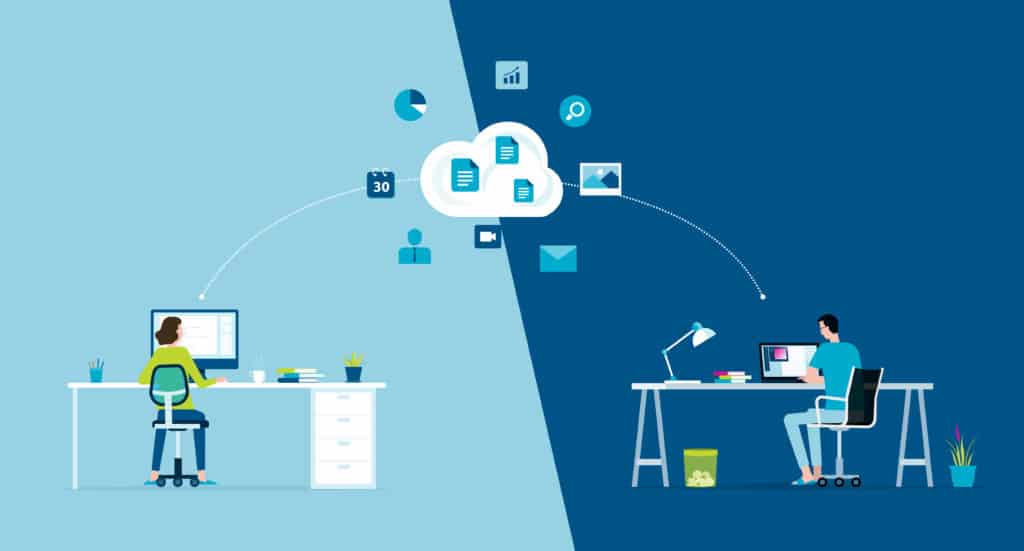The Great Resignation. The Jobpocalyse. Whatever you want to refer to it as, the issue boils down to companies struggling to attract and retain talent.
During the pandemic, knowledge workers got a glimpse of what life is like fitting work around their lives instead of vice versa. Many liked what they saw in a remote or hybrid work environment and wanted more of the flexibility it brings. And when their current company could not meet their needs for flexible working, they moved on to a company that would.
The pandemic has led to a massive rebalancing of expectations around when and where work gets done. According to findings from Future Forum, a Slack consortium that helps companies make the transformations necessary to thrive in the new economy, 78% want flexibility in where they work (up from 76% last quarter), and 95% want flexibility in when they work (up from 93% last quarter). And if those expectations are not met, 72% of employees are likely to look for a job within the next year if they lack flexibility.
Developing an incredible employee experience and working culture that supports this necessary flexibility has become a make or break for many organizations. To succeed, companies must adapt to hybrid work that is built for a digital-first world. They need the right tools to help employees feel connected and make them want to stay with the organization for years to come.
From cubicles to culture
They say the past informs the present so let’s peek back at workplaces of years ago. In the late 1960s, the first cubicles appeared in offices. Cubicles were essentially the first siloing of humans in individual physical boxes. In the 1990s, there was a swing the other way, with the advent of hot desks and open spaces. The cubicle walls came down, but invisible walls went up as headphones became commonplace. Around this time, the Internet showed up in people’s houses and began supplementing the physical space of work.
Then let’s fast forward to March 2020. We’ve inverted the digital and physical space. Now the physical supplements the digital going forward. At the beginning of the pandemic, organizations slung a lot of technology at their employees so they could be productive while working from home. Suddenly employees had to learn Zoom, navigate home cybersecurity, and figure out a world where DMs were more prevalent than emails.
But many organizations didn’t balance this shift to remote tech with support for remote work culture. A cultural void left many individuals disillusioned about what their organization’s culture meant in a digital environment. What are the expectations for attending meetings during school drop-off? What if the dog needs a walk during a client call? As the barrier between work life and personal life became blurred, so did the rise of uncertainty around employers’ expectations and how much flexibility employees would receive.
A digital headquarters for flexibility and results
What organizations are missing is a digital headquarters, a place that is connected, flexible, inclusive, and, most importantly, one that everyone can be a part of and contribute to. By shifting our thinking from work as a place we go to a digital headquarters, we start to think of work as a digital place that helps employees engage with one another no matter where they work.
Think of your digital headquarters as a global connector that sits at the intersection between business results and flexibility. A digital headquarters unites teams in a shared mission across time zones and workplaces. It provides inclusive ways of working, so employees feel more connected to their work and colleagues, increasing their sense of belonging and engagement and leading to higher productivity and retention.
Slack is the number one tool for laying the foundation of an organization’s digital headquarters. What differentiates Slack is that it provides integrations with other Salesforce products and tools, and it offers structured and collaborative workflows around accomplishing tasks. Slack is a place where organizations can:
- Break down silos: Employees share knowledge, culture, and identity.
- Embrace flexibility: Teams can move fast because they have flexible, digital-first tools at their disposal.
- Automate work: Anyone in your company, whether they’re technical or not, can automate mundane, repetitive tasks that take away time from deep, meaningful work or time spent with your team and customers.
- Guarantee enterprise-grade security and scale: Some of the largest hedge funds in the world are only allowed to use Slack and not any other messaging platform because it is considered so secure.
By creating a digital headquarters in Slack, companies can give employees the flexibility they crave. Employees can do the work they need to do and in the manner they want to do it, all while keeping a ripple of culture running throughout. Some of the ways that organizations are best leveraging Slack for their digital headquarters are:
- For general announcements and communications: It may sound basic, but having your executives share company news via Slack creates two-way communication between employees and higher-ups. Executives become more accessible and responsive to employees’ needs while helping to define the culture.
- To replace email: The name Slack was originally an acronym for “Searchable Log of All Conversation and Knowledge.” By moving away from email, organizations can fuel institutional knowledge, especially among new employees looking for historical information from before they started.
- For Party Homer emojis: Th
 is one is a bit out of left field, but it supports the idea that you should keep things light and lively in Slack. A digital culture needs to have some fun to replace all those in-person happy hours, and amusing emojis are a great way to do just that.
is one is a bit out of left field, but it supports the idea that you should keep things light and lively in Slack. A digital culture needs to have some fun to replace all those in-person happy hours, and amusing emojis are a great way to do just that.
Make Slack your digital HQ with Silverline
Slack connects your teams in a digital HQ that’s fast, flexible, and inclusive for a work-from-anywhere world. At Silverline, we understand how critical a Slack digital headquarters is to recruit and retain talent, build a culture for today’s hybrid work environment, and create a workplace grounded in flexibility and collaboration.
Silverline’s Slack consulting services help you maximize your investment, providing a roadmap that guarantees your Slack solution meets your organization’s specific needs and cleanly integrates with your Salesforce platform. Learn how our Slack consulting services can help your organization.




